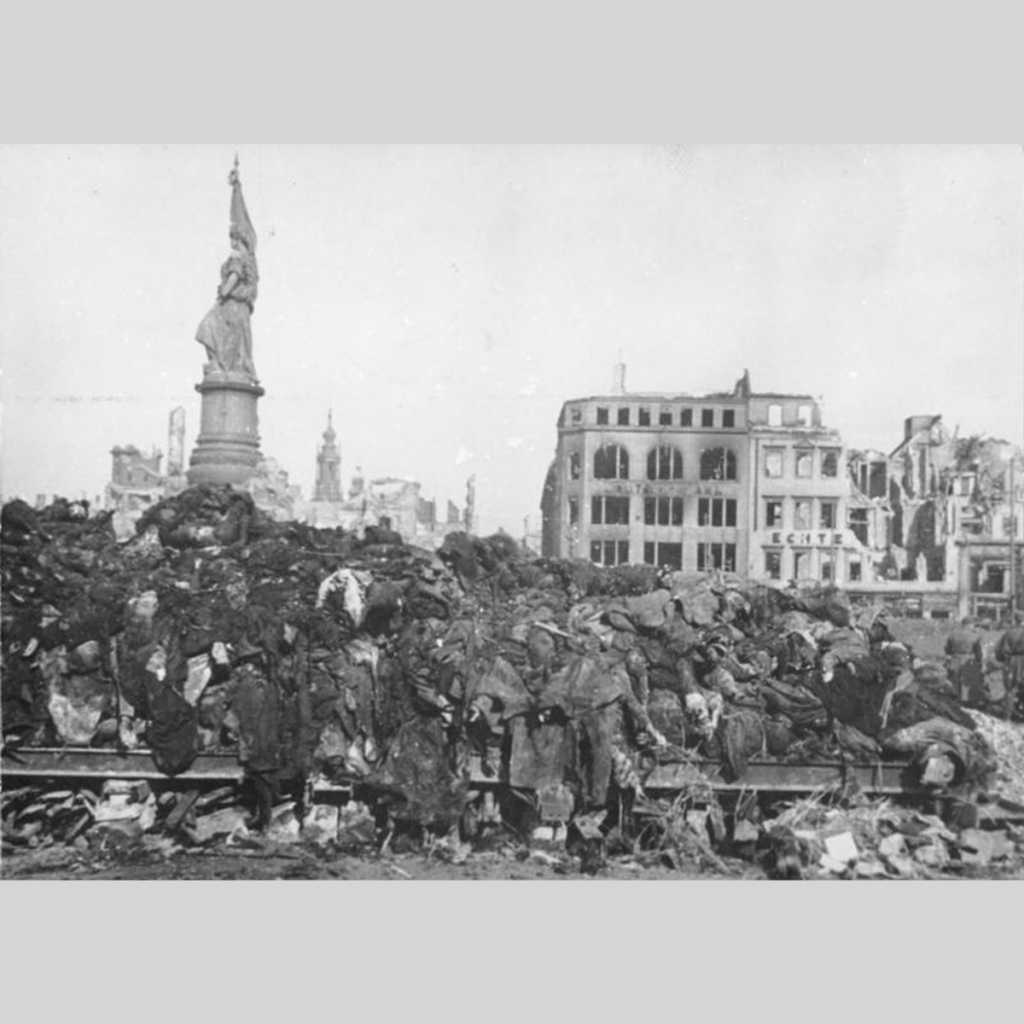
A pile of bodies awaits cremation after the firebombing of Dresden, February 1945.
The bombing of Dresden in February 1945 has remained one of the most controversial aspects of World War Two. Dresden, a city unaffected by bombing up to that point in the war, lost many thousands of civilians in the firestorm that was created by the Allies.
In four raids between 13 and 15 February 1945, 722 heavy bombers of the British Royal Air Force and 527 of the United States Army Air Forces dropped more than 3,900 tons of high-explosive bombs and incendiary devices on the city. The incendiary bombs created so much fire that a firestorm developed.
The resulting firestorm destroyed 40 square kilometers (15 square miles) of the city center. The more the city burned, the more oxygen was sucked in – and the greater the firestorm became. It is thought that the temperature peaked at 1,800 degrees Fahrenheit (990 degrees Celsius). The surface of roads melted and fleeing people found that their feet were burned as they ran.
In all, between 22,000 and 40,000 people were killed by the Allied bombing in Dresden. Historians still argue over the number of deaths. However, there were so many refugees in the city at the time that the real figure will almost certainly never be known.
The Allies dropped more than 3,900 tons of bombs.
The city was not a military target. It was known as a cultural center full of beautiful architecture with some buildings dating back a thousand years. Also, Dresden was undefended: no searchlights, no bursting flak. Dresden was a civilian target.
The thing that is so shocking about Dresden is that they didn’t bomb it to destroy military infrastructure and help the war, it was purely to terrorize the German people.
There was a lot of industry and mobility infrastructure in Dresden, and there could have been an actual gain for the Allies if they had targeted it, but they didn’t. They just bombed the densest populated parts of the city.
.jpg)
A mother and her children.
The bombing methods used by the Allied were to encourage total destruction of buildings: the high explosive bombs first expose the wood frames of buildings, then the incendiary bombs ignite the wood, and finally followed by various explosives to hamper the firefighting efforts.
After the raid had finished, SS guards brought in from a nearby camp, burnt the bodies in the city’s Old Square (the Altmarkt). There were so many bodies that this task took two weeks to get completed.
